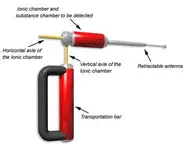Re: discussion on the various possible theories that may be applicable to LrL's
J__P wrote
The nuclear magnetic resonance of buried gold is not in the megahertz range.
This frequency of 1.729 MHz is an artificially modified frequency that scientists publish and use only when they place gold samples in a very strong magnetic field in a laboratory.
Well my sources disagree with you on this, and say flatly that gold has no resonant frequency, and one claims it is 5 khz.
J__P also wrote
Considering the fundamental frequency is buried in noise so it can't be measured until we increase the field 47,000 times, how can we expect to get a harmonic to resonate when it is even weaker, and is also an undefined frequency like the fundamental?
Picking out a discreet item from background is the basic problem of all treasure hunting and metal detecting. The whole idea of finding a resonant frequency is that you get an increasing volume due to the resonance, thus allowing it to be readily picked out of background clutter. A receptor circuit tuned to pick up the correct resonance, with some sort of directional ability then would suffice.
J__P also wrote
How can you keep your detector resonating at the correct frequency? Built-in magnetometer correction?
That might work, but remember how we have a really sloppy frequency where most of the gold atoms are not resonating at the calculated frequency?
This set of questions are based on the idea that gold has a variable resonant frequency, which I can not find any documentation to support.
J__P also wrote
Do you know of a human sense or practical man-made machine that can localize a sub-noise strength 37 Hz electromagnetic signal?
If so, will this method or machine work for anyone who wants to try it?
Actually this discussion did give me an idea for a device that would locate gold, silver and other metals relatively easily, at a much greater range than what is possible with metal detectors, however would also be quite dangerous to operate. It would not locate any electromagnetic signal but would work due to another reaction or attribute of metals. Yes it would work for anyone who would operate it, even a robot.
Another possible biologic detector which might be possible would be by turning to the animal world for assistance. Metals buried in the earth often slowly give off molecules into the environment, gold being not very chemically reactive so probably the least detectable, but it has been proven that dogs are able to detect quite tiny amounts of whatever they have been trained to detect; that they can be trained to detect non-biologic targets has been well proven by the bomb-sniffing dogs. I suspect that it would be possible to train a dog to find silver, copper or iron with a little patience and effort. This also would then work with anyone capable of handling the dog, even if blind.
If the idea of a functional LRL is not to be based on a resonant frequency, (whether then detected by circuitry or a human sense) what would be a plausible theory of operation? Thank you in advance.
EE THr wrote
The so-called ion chambers in LRLs are also sealed units, so how can ions "enter the chamber" on these? Also, there is no sensing device attached to the LRL chambers, so how could anything be detected, even if these "certain types of ions" could enter their sealed chambers?
As I understand it, in geiger counters the radiation source emanations <particles & rays> do pass through the ion chamber; not all of course but a percentage, and the radiation causes the ions in the sealed chamber to react and produce a tiny EM signal that is then detected and amplified to a level that the human operater can perceive either as a sound or as a rise in a gauge. For a LRL that has such an ion chamber, which then would depend on the gold or silver etc being a radiation source, seems a ridiculous theory of operation since most of these metals are not radioactive at all. As to how this would be detected when the chamber has no detection circuitry connected to it, the only answer I can think of is that they do not function. In theory there would be a way, without anything directly attached, if the ion chamber would itself be generating some sort of detectable EM signal due to the excitation of the ions in it, then the EM signal could be picked up by antenna/receptors set up to receive them etc but from what I can see on those examples online none have this ability.
Thank you again for the very interesting replies, and for giving me an idea that I may just have to try out if I can figure out how to do it safely. I hope you have a great day.
Oroblanco












